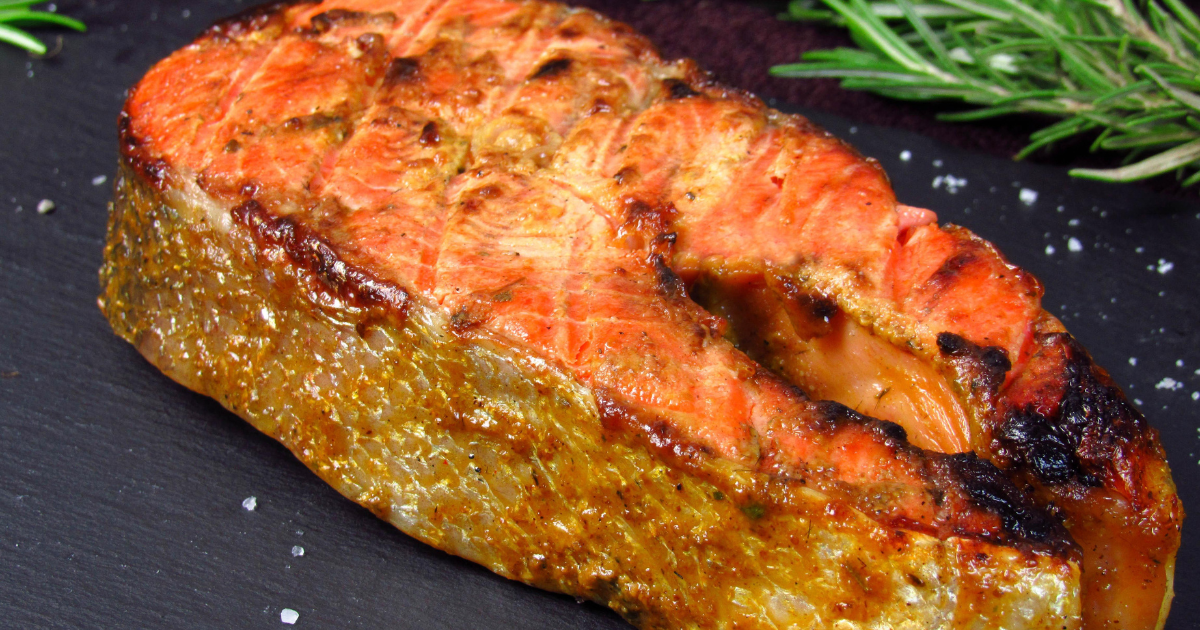The Best Optimal Smoked Salmon Cooking Temperature
There’s something irresistible about the rich, smoky aroma of fresh salmon slowly cooking, transforming into a melt-in-your-mouth delicacy. Whether you’re hosting a dinner party or simply indulging in a cozy meal at home, smoked salmon can elevate any occasion. But, when it comes to preparing smoked salmon, one of the most crucial aspects is getting the Best Optimal Smoked Salmon Cooking Temperature just right.
Table of Contents
Best Optimal Smoked Salmon
Getting the temperature wrong can mean the difference between a dry, overcooked piece of fish and a moist, perfectly cooked masterpiece. It can also determine whether your dish is safe to eat. So, how can you ensure that your smoked salmon is both delicious and safe to enjoy? This guide will take you through all the essential information you need. about achieving the perfect Optimal Smoked Salmon Cooking Temperature, from different smoking techniques to tips on testing doneness. Let’s dive in.
What is the Ideal Smoked Salmon Cooking Temperature?
The Importance of Optimal Smoked Salmon Cooking Temperature for Flavor and Safety
When it comes to preparing smoked salmon, the internal temperature plays a pivotal role in both flavor and safety. Achieving the correct temperature ensures your fish is tender, flavorful, and safe to eat.
- Food Safety: According to the USDA, the recommended minimum internal temperature for safety for fish, including salmon, is 145°F (63°C). This ensures harmful bacteria and parasites are killed, making your meal safe to eat.
- Flavor and Texture: While reaching 145°F guarantees the fish is fully prepared, anything higher can cause the salmon to dry out, leaving you with a tough, less flavorful result. This is why monitoring the internal temp during cooking is essential to keep that perfect texture intact.
Whether you’re hot-smoking, cold-smoking, or reheating, knowing when to stop smoking and monitor the internal temperature is critical. But first, let’s explore the different smoking methods and how they affect the final temperature of your smoked salmon.
Hot-Smoking vs. Cold-Smoking: Understanding the Different Techniques
You can make smoked salmon by preparing it in various ways using two primary methods: hot-smoking and cold-smoking. Both methods differ significantly in terms of cooking time, temperature, and the final texture of the fish.
Hot Smoking
Hot smoking is the most common method used when preparing smoked salmon at home. The salmon is exposed to heat and smoke simultaneously, cooking it fully.
- Smoking Temp: Hot smoking is typically done at temperatures ranging from 120°F to 180°F, with the salmon reaching an internal temperature of 145°F.
- Texture and Flavor: Hot-smoked salmon is fully cooked and has a flaky, moist texture. The high heat allows the smoke to penetrate the fish, infusing it with a delicious smoky flavor.
Cold Smoking
Cold smoking, on the other hand, involves exposing the fish to smoke at much lower temperatures, typically below 90°F. This method is often used for salmon that will be eaten without further cooking, like lox or gravlax.
- Smoking Temp: The internal temperature of the fish remains lower than 90°F, meaning the fish isn’t technically cooked but is instead cured by the smoke.
- Texture and Flavor: Cold-smoked salmon has a softer, silky texture and a more delicate flavor. It’s often served raw or as a topping for bagels and salads.
Understanding Internal Temp Variations
When hot-smoking your salmon, ensuring the internal temp reaches 145°F is essential for both food safety and optimal texture. Cold-smoked salmon, on the other hand, doesn’t require the same level of cooking temperature, but should still be handled carefully to ensure it’s cured properly.
How to Check the Optimal Temperature for Smoked Salmon Accurately
Essential Tools for Monitoring the Internal Temp of Smoked Salmon
To ensure your smoked salmon reaches the right internal temp, you’ll need the right tools. Here are a couple of options to help you monitor the temperature accurately.
Instant-Read Thermometer
An instant-read thermometer is a great tool for checking the internal temperature of smoked salmon. It gives a quick reading and allows you to check your salmon’s temperature without losing heat. Simply insert the probe into the deepest section of the fish and wait a few seconds for the reading.
Probe Thermometer
If you’re looking to track the internal temperature of your salmon continuously, a probe thermometer is an excellent choice. You can place the probe into the deepest section of the fish before you start smoking and monitor it throughout the process, making it ideal for longer smoking sessions.
The Right Time and Temperature: A Step-by-Step Guide
So, when should you check the internal temperature of your smoked salmon? Here’s a step-by-step guide to achieving perfectly smoked salmon, with a focus on the right internal temperature.
- Start with Cold Fish: Begin with salmon that’s been brought to room temperature before smoking. This helps the fish cook evenly and more efficiently.
- Monitor the Temp Regularly: As the salmon starts to smoke, begin checking the internal temperature once the fish reaches around 120°F. It’s better to start early than risk overcooking.
- Remove at 145°F: Once the internal temperature reaches 145°F (63°C), your salmon is done. At this point, the fish will be fully cooked, moist, and safe to eat.
- Let it Rest: After removing your salmon from the smoker, let it rest for 5–10 minutes before serving. This helps The juices are reabsorbed, helping to retain the moisture.
Signs of Overcooked Smoked Salmon and How to Avoid It
Overcooking is a common issue when smoking salmon, and it can leave the fish dry and tough. So, how can you avoid overcooking your salmon?
- Check the Temp Frequently: If you’re not sure whether your salmon is done, use a thermometer. If it’s close to 145°F, start checking more frequently.
- Know When to Stop: Once the internal temperature hits 145°F, it’s time to take the fish off the smoker. Don’t wait any longer, or you risk overcooking.
Smoked Salmon Recipe with Perfect Internal Temp
Ingredients for Smoked Salmon
Here’s a simple recipe to help you smoke your own salmon, with the perfect internal temperature in mind.
| Ingredient | Amount | Notes |
|---|---|---|
| Fresh salmon fillet | 1 lb | Skin-on for better results |
| Sea salt | 1 tbsp | For curing |
| Brown sugar | 2 tbsp | For curing |
| Black pepper | 1 tsp | To taste |
| Lemon zest | 1 tbsp | Optional, for added flavor |
| Wood chips (applewood) | 2 cups | For smoking |
Step-by-Step Smoked Salmon Recipe
- Prepare the Salmon: Start by curing your salmon fillet. Mix the salt, brown sugar, black pepper, and lemon zest (if desired) to create a curing rub. Apply the rub generously over the salmon and refrigerate for 1–2 hours.
- Smoke the Salmon: Preheat your smoker to around 180°F. Place the salmon on the smoker rack, skin-side down, and begin smoking. Monitor the internal temperature.
- Check the Internal Temp: Start checking the internal temperature of the salmon once it reaches 120°F. When the temperature reaches 145°F, remove the salmon from the smoker.
- Let the Fish Rest: Allow your salmon to rest for 5–10 minutes before serving. This helps keep the salmon moist and flavorful.
This is How I get PERFECT Smoked Salmon EVERY Time
Frequently Asked Questions (FAQ) About Optimal Smoked Salmon Cooking Temperature
How can I be sure my smoked salmon is safe to eat?
To ensure your smoked salmon is safe to eat, make sure it reaches an internal temperature of 145°F when hot-smoking. This guarantees that harmful bacteria are killed, making the fish safe to consume.
Can I use a regular kitchen thermometer to check the temp?
Yes! A regular instant-read thermometer works well for checking the internal temperature of your smoked salmon. Just make sure to check the deepest section of the fish.
What happens if I overcook smoked salmon?
Overcooking smoked salmon can result in a dry, tough texture. To avoid this, remove the salmon from the smoker once it hits 145°F internally. Resting the salmon afterward will also help retain its moisture.
What’s the best way to store smoked salmon after cooking?
Store your smoked salmon in an airtight container in the fridge. It’s best eaten within a week, but if you want to keep it longer, you can freeze it for up to three months.
Conclusion: Achieving Smoked Salmon Perfection, Every Time
With the right tools and a careful eye on the Optimal Smoked Salmon Cooking Temperature, you can confidently create delicious, safe, and perfectly cooked perfect smoked salmon on every occasion. Whether you prefer the rich, flaky texture of hot-smoked salmon or the silky, delicate flavor of cold-smoked salmon, understanding the temperature requirements for each method is key to your success. Follow the guidelines in this article, and you’ll soon master the art of smoking salmon, impressing your guests with every bite.
Now it’s your turn to get cooking! Grab your salmon, fire up the smoker, and create the perfect dish with the ideal Optimal Smoked Salmon Cooking Temperature. Happy smoking!
Tried It? Tell Us How It Went!
There are no reviews yet. Be the first one to write one.

